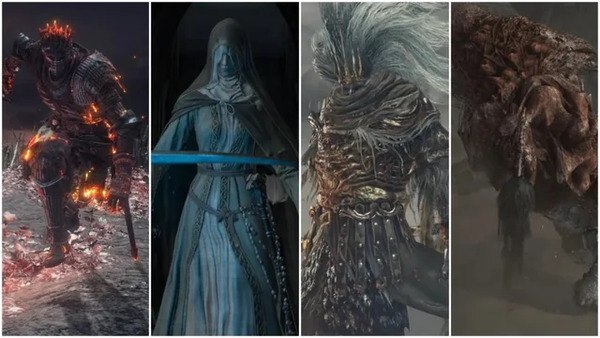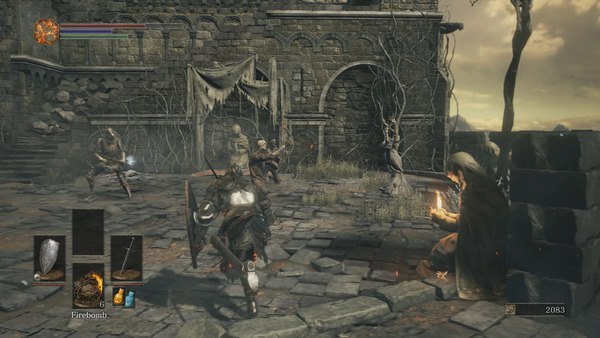Dark Souls III stands as a pivotal entry in FromSoftware’s renowned series, encapsulating the themes of ambition, sacrifice, and the cyclical nature of existence. As players traverse the dark and twisted landscapes of Lothric, they encounter a myriad of characters, each reflecting different facets of ambition—both its virtues and its perils. This article delves deeply into the intricacies of ambition as depicted in Dark Souls III, examining how this theme resonates through its gameplay, lore, and character interactions.
The Nature of Ambition in Lothric

Ambition serves as a double-edged sword in Dark Souls III, driving characters to pursue power at any cost while simultaneously leading to their downfall. The game presents a world steeped in decay, where ambition is often tied to the desire for power or the longing to rekindle the fading flame.
The Flame and Its Symbolism
The First Flame, which ignited the Age of Fire, symbolizes the allure of ambition. The desire to maintain this flame drives many characters, including the Lords of Cinder, to pursue their fates relentlessly. However, the flame’s dwindling state mirrors the futility of their ambitions.
Characters as Reflections of Ambition
Key figures such as Lorian, Elder Prince and Lothric, Younger Prince, embody this theme. Lorian’s commitment to protect Lothric represents a noble ambition, yet it ultimately results in tragedy. Their intertwined destinies highlight how ambition can be both noble and disastrous, leading to a cycle of suffering and regret.
The Lords of Cinder: Embodiments of Fallen Ambition
The Lords of Cinder are central to the game’s narrative, each representing a different aspect of ambition. Their stories are cautionary tales about the consequences of unrestrained desires for power and legacy.
Gwyn’s Legacy
Gwyn, the Lord of Sunlight, sacrificed himself to link the fire, representing a noble yet tragic ambition. His decision set the stage for future generations, leading to the endless cycle of sacrifice that defines the series. This echoes the notion that ambition often requires significant personal sacrifice, a theme prevalent in Dark Souls III.
The Fate of the Lords
The Lords, having forsaken their thrones, exemplify the cost of ambition. Their struggles to fulfill their roles as guardians of the flame reveal the burdens they carry. For instance, the once-mighty Abyss Watchers are now a fragmented remnant of their former selves, showcasing how ambition can lead to fragmentation and despair.
The Player’s Role: An Ambitious Ashen One

As the player, you embody the Ashen One, a character whose ambition drives them to rekindle the First Flame or to usher in the Age of Dark. This pivotal choice encapsulates the overarching theme of ambition throughout the game.
Choices and Consequences
Your journey is rife with choices that reflect your ambition. Will you reignite the flame, perpetuating the cycle of sacrifice, or will you embrace the darkness, challenging the established order? Each decision carries weight, emphasizing how ambition shapes not only your fate but also the fate of Lothric.
The Pursuit of Power
The Ashen One’s quest for power manifests through the acquisition of souls, weapons, and spells. Each victory comes at a cost, echoing the sacrifices made by the Lords of Cinder. This gameplay loop reinforces the idea that ambition in Dark Souls III is not merely about achieving power but understanding the implications of that pursuit.
The Interplay of Ambition and Despair
The world of Dark Souls III is rife with despair, reflecting the inevitable consequences of unchecked ambition. This despair is not only experienced by the characters but also permeates the game’s environment and narrative structure.
The Ruins of Lothric
As players explore Lothric, they encounter remnants of ambition gone awry. The dilapidated castles, crumbling villages, and defeated foes all serve as reminders of the aspirations that once thrived but ultimately led to ruin. Each area tells a story of ambition that has succumbed to despair, reinforcing the game’s dark tone.
NPCs: Voices of Despair
Non-playable characters (NPCs) like Irina of Carim and Anri of Astora provide poignant insights into the consequences of ambition. Their stories often end in tragedy, showcasing how their desires for a better life or power lead to suffering. Anri’s quest for vengeance against the dark forces serves as a tragic reflection of ambition leading to despair.
The Cycle of Rebirth: Ambition in Repetition

Dark Souls III intricately weaves the theme of ambition into its narrative structure, emphasizing the cyclical nature of existence. The game’s ending reinforces this cycle, highlighting how ambition leads to rebirth and renewal.
The Fire and the Dark
Players are confronted with the choice between rekindling the flame or allowing it to fade, symbolizing the duality of ambition. This cyclical pattern reflects the real-world implications of ambition, suggesting that while ambition drives progress, it can also lead to stagnation and decline.
The Legacy of Choices
The choices players make resonate beyond the individual playthrough, impacting the world of Lothric in profound ways. Each decision made by the Ashen One echoes through time, suggesting that ambition, whether noble or misguided, leaves a lasting mark on the world.
The Philosophical Undertones of Ambition
Dark Souls III invites players to contemplate the philosophical implications of ambition through its narrative and gameplay mechanics. This reflection on ambition invites deeper thought on the human condition.
Existentialism and Ambition
The game’s themes resonate with existential philosophy, urging players to confront the meaning of their ambitions. The Ashen One’s journey reflects the struggle for purpose in a world rife with uncertainty. This exploration of ambition aligns with existentialist thought, emphasizing personal responsibility and the search for meaning.
The Cost of Legacy
The pursuit of legacy and the desire to be remembered drives many characters in Dark Souls III. However, this pursuit often comes at a significant cost, suggesting that ambition is a double-edged sword. The weight of legacy burdens characters, leading to their eventual downfall, a poignant commentary on the nature of ambition itself.
The Role of Sacrifice in Ambition

Sacrifice is a recurring motif throughout Dark Souls III, closely tied to the theme of ambition. Characters are often faced with choices that require them to sacrifice something valuable in pursuit of their goals.
Personal Sacrifice
The Lords of Cinder exemplify this notion, as each has sacrificed aspects of their humanity or relationships to fulfill their ambitions. For example, the sacrifice made by Yhorm the Giant showcases how ambition can lead to a loss of identity, highlighting the personal costs associated with power.
Collective Sacrifice
The concept of collective sacrifice is also present in the game’s lore. The struggles of the various factions within Lothric demonstrate how ambition can unify or divide communities. The conflict between the Fire Keepers and the Abyss Watchers represents the different interpretations of ambition and sacrifice, illustrating the complexity of the theme.
The Moral Ambiguity of Ambition
Dark Souls III challenges players to navigate the moral ambiguities surrounding ambition. The game presents a world where right and wrong are often obscured, forcing players to confront the ethical implications of their actions.
The Gray Areas of Morality
Characters like the Fire Keeper and the Nameless King embody the complexities of moral ambition. The Fire Keeper’s desire to preserve the flame contrasts with the Nameless King’s rejection of it, presenting players with conflicting ideals of ambition. This moral ambiguity invites players to question their motivations and the consequences of their choices.
Player Agency and Ambition

The game’s open-ended narrative allows players to define their own moral compass. The choices made throughout the journey shape the player’s understanding of ambition, making each playthrough a unique exploration of ethical dilemmas. This aspect of Dark Souls III reinforces the idea that ambition is not a straightforward path but a labyrinth of decisions and consequences.
Conclusion: The Lasting Impact of Ambition
Dark Souls III serves as a poignant exploration of ambition, offering players a rich tapestry of characters, choices, and moral dilemmas. The game masterfully intertwines the theme of ambition with its intricate gameplay and storytelling, inviting players to reflect on their motivations and the consequences of their pursuits.
Through the lens of ambition, Dark Souls III reveals the cyclical nature of existence, the sacrifices made in the pursuit of power, and the moral complexities inherent in human desire. As players navigate Lothric, they are not merely warriors battling foes but also individuals grappling with the weight of their ambitions.
In the end, Dark Souls III leaves an indelible mark on players, urging them to consider what ambition means in their lives and the sacrifices they are willing to make in its pursuit.


